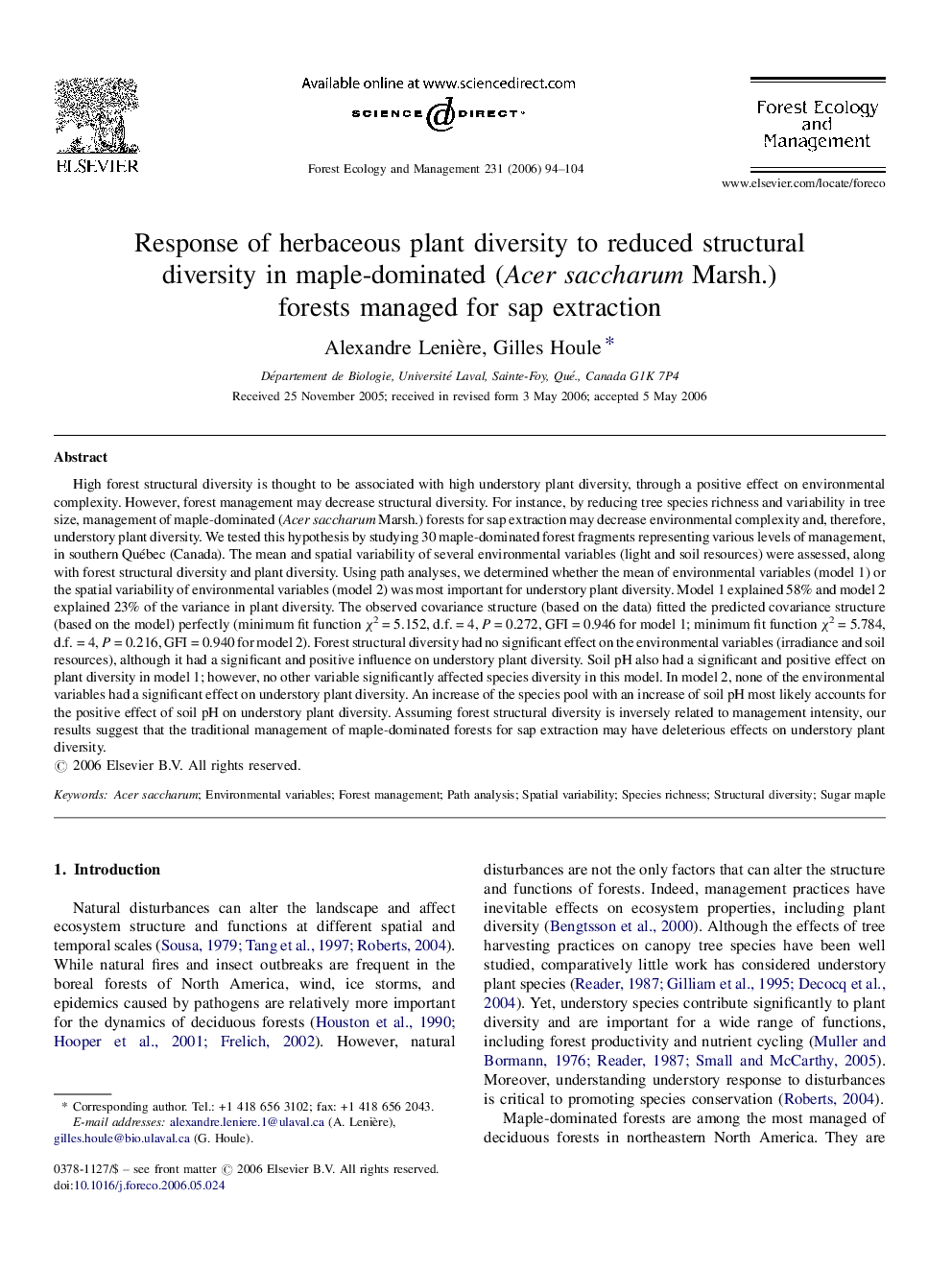| Article ID | Journal | Published Year | Pages | File Type |
|---|---|---|---|---|
| 90869 | Forest Ecology and Management | 2006 | 11 Pages |
High forest structural diversity is thought to be associated with high understory plant diversity, through a positive effect on environmental complexity. However, forest management may decrease structural diversity. For instance, by reducing tree species richness and variability in tree size, management of maple-dominated (Acer saccharum Marsh.) forests for sap extraction may decrease environmental complexity and, therefore, understory plant diversity. We tested this hypothesis by studying 30 maple-dominated forest fragments representing various levels of management, in southern Québec (Canada). The mean and spatial variability of several environmental variables (light and soil resources) were assessed, along with forest structural diversity and plant diversity. Using path analyses, we determined whether the mean of environmental variables (model 1) or the spatial variability of environmental variables (model 2) was most important for understory plant diversity. Model 1 explained 58% and model 2 explained 23% of the variance in plant diversity. The observed covariance structure (based on the data) fitted the predicted covariance structure (based on the model) perfectly (minimum fit function χ2 = 5.152, d.f. = 4, P = 0.272, GFI = 0.946 for model 1; minimum fit function χ2 = 5.784, d.f. = 4, P = 0.216, GFI = 0.940 for model 2). Forest structural diversity had no significant effect on the environmental variables (irradiance and soil resources), although it had a significant and positive influence on understory plant diversity. Soil pH also had a significant and positive effect on plant diversity in model 1; however, no other variable significantly affected species diversity in this model. In model 2, none of the environmental variables had a significant effect on understory plant diversity. An increase of the species pool with an increase of soil pH most likely accounts for the positive effect of soil pH on understory plant diversity. Assuming forest structural diversity is inversely related to management intensity, our results suggest that the traditional management of maple-dominated forests for sap extraction may have deleterious effects on understory plant diversity.
